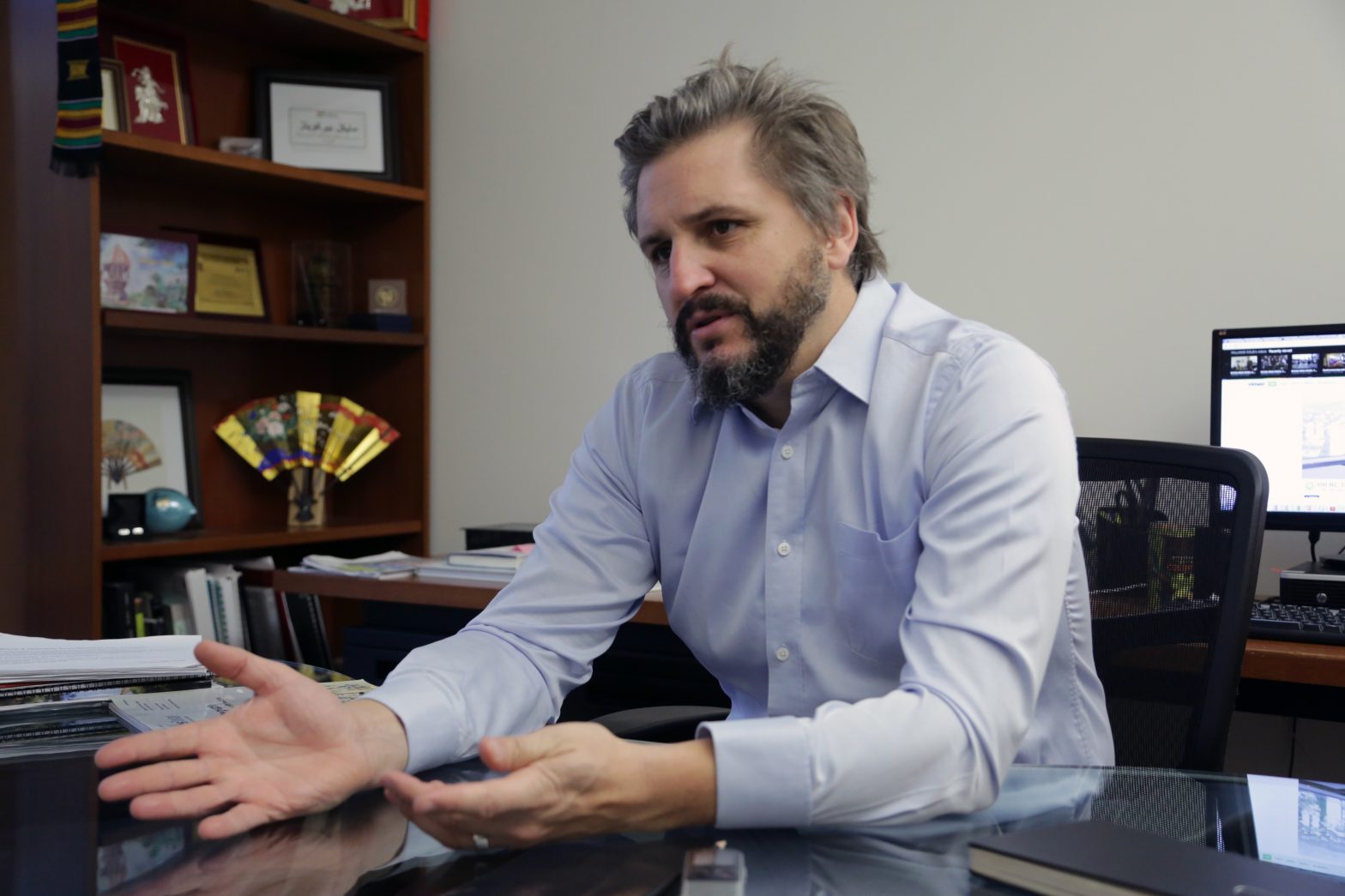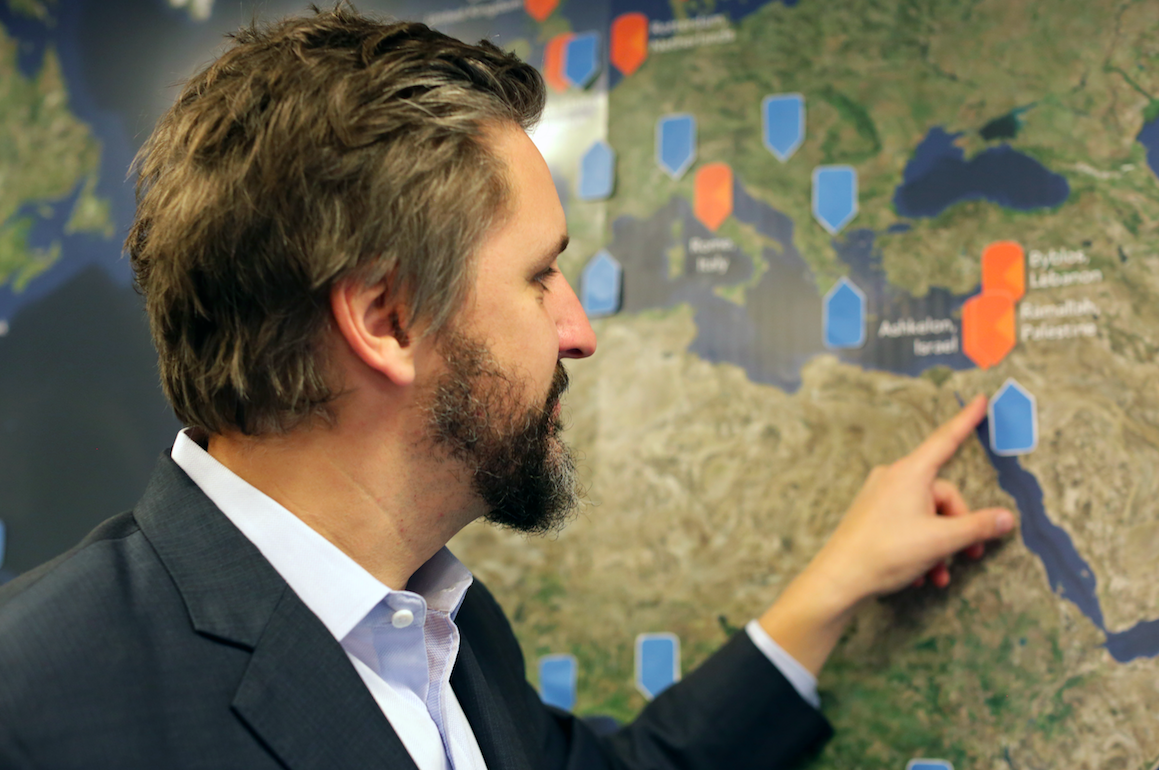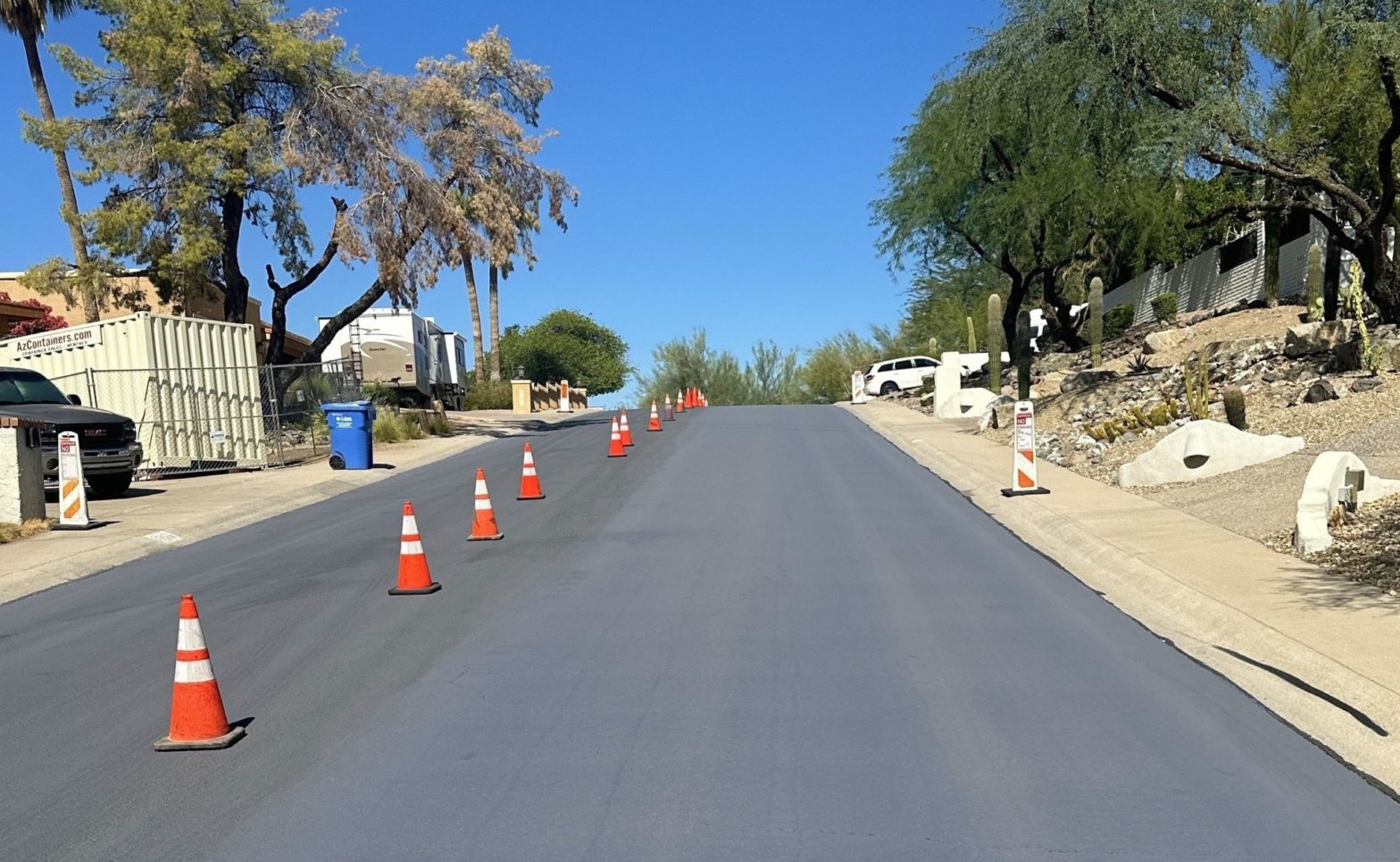
Photo: 570A6819
Interview: Michael Berkowitz, President of 100 Resilient Cities
01 March 2016
by Jonathan Andrews
Michael Berkowitz, President of the 100 Resilient Cities network, met with Tom Teodorczuk, at their offices in New York to talk about the new 10 percent resilience pledge and the selection of the final 33 cities that will join the network by May
2015 seemed a particularly busy year for 100 Resilient Cities. New York and New Orleans released their Resilient Strategies, you hosted the first ever Resilience Day at COP21, and launched The Resilience Pledge. True. 100 cities is a lot. Even though we only have 67 cities so far, there are 40 different countries speaking 24 languages. That’s one aspect why the pace has been so frenetic. Another aspect is people are beginning to realise that resilience is a really important concept and resilience being as broad as we define it means there are different kinds of partners who need and want to play a role in cities.
100RC seeks to build resilience in cities by tackling stresses, not just shocks. Can you elaborate on this distinction? We’re now reading the third round of applications from cities and they tend to be shock-focused. Lots of times cities come in with this perspective that resilience is about surviving the next hurricane, tornado or terrorist attack. But what’s interesting–and this has reasonated with cities–is understanding where the intersection between the shocks and the stresses is. For example, Paris applied to our programme in 2014 with a very environmental agenda. They saw COP21 coming and Mayor Hidalgo is an environmentally focused mayor. Then the terrorist attacks in 2015 happened. Now, there was an opening for Paris to think about how to rearchitect itself in ways that both reduces pollution and flooding potential and integrates new immigrants.
It’s tempting to think that Paris and New Orleans provide examples of how very bad things need to happen to cities in the short-term for them to achieve lasting long-term reform. I’m not sure I would agree. The Chinese words for crisis and opportunity are very similar and this is what you’re alluding to. New Orleans’ risk factors are not just that their water is at, or below, sea level through most of the city. That is an important risk factor but the other risk factors around Hurricane Katrina and climate change have to do with the fact they have huge poor populations that are not well integrated into society and they had for many generations corrupt and inept government that people didn’t trust. That is changing now but that legacy continues. Those stresses made New Orleans more at risk to climate change and hurricanes as much as rising sea temperatures. Partly why cities are so at risk to climate change is not just that the climate is changing. It’s also that cities are changing.
So 100RC takes a long-term approach towards reforming cities? That’s an accurate reflection. Cities often say to us we are fighting fires all the time. Part of that makes cities compelling to work with because unlike national governments, mayors are on the hook for collecting the trash, fixing the potholes and keeping crime down, doing these really practical things. That also makes them much more short term oriented because every day there is a new crisis of the moment. One of the things the Chief Resilience Officers are trying to do is institute some of this longer-term planning so that cities can progress over generations. The countries that have done it best, like Singapore or in Northern Europe, the Dutch or the Danes or the Swedes, all have longer term development plans which they have been faithful to over the course of different administrations.

How did the 10% Resilience Pledge come about? It came up because we were pushed by the Mayor of Mexico City to think about something the mayors could commit to. We came up with this idea of the ten percent pledge. It’s put resilience thinkers together with budget people and that’s a marriage that doesn’t happen in cities.
Was it difficult to convince mayors to commit to more expenditure on the Resilience Pledge? No. I thought I was going to have a harder time than what actually happened. Twenty-two cities have signed and I expect over the next six months we’ll have a much higher percentage. As the Mayor of New Orleans said to us, if we’re doing this right 10 percent is a minimal threshold. For him resilience is solving transportation and poverty and public health as well as urban flooding.
Can you talk more about the process of how resilience strategies evolve in practice? It’s interesting that they result in cities putting things that used to sit in different silos together in a singlestrategy. To give you an example from the New York strategy OneNYC, what that plan did was to say we have a goal, using metrics, to have all New Yorkers live within a 40-minute sustainable commute of a good job. But what that also did was put the mayor’s sustainable transportation plan Vision Zero and his huge housing initiative together with economic development. You began to see how the three actually work together and complement each other in ways that otherwise would not have happened. All of a sudden you’re starting to think not just about better transportation to get people to their jobs more quickly but about diversifying the economic centres of New York so they’re out of midtown and downtown where they’ve always been and putting them in downtown Brooklyn, Flushing, Queens, or in the Bronx. That’s great for resilience–it gives more sustainable economic development to people closer to where they live but it also diversifies so if midtown or downtown New York experiences a disaster, there are other economic centres that can continue to carry the load.
But how is the strategy and planning affected by the day-to-day, unforeseen, external shocks that occur in cities? In the 1990s I was the Deputy Commissioner of Emergency Management in New York and spent my time planning for hurricanes. Then two planes flew into two buildings. trying to guess what the hazard is going to be is sometimes a fool’s errand. But you do have to know what your hazards are and whether you’re at risk to hurricanes and storm surge and coastal flooding. Butover-emphasising that is not useful for cities. Who knows what the next thing is going to be? If you were in Los Angeles in the late 1980s, you didn’t have to know that Rodney King was going to get beat up by cops and it would be captured on film. You could have looked at lots of other factors to know you were at risk from something happening like thatdislocated communities, high crime, poor trust of the institutions of government, or a bad transportation system.
100RC is a distribution network. Our point of view is that cities are not taking advantage of the good solutions whether that’s funding, best practice or new technologies.
100RC is pioneered by the Rockefeller Foundation. How do you fit within the foundation’s overall umbrella? It’s hard to see this given we’re located here in New York but we’re a separate NGO. We are hopefully going to exist for many years beyond our initial tranche of funding because we’re committed to partnering with cities over a generation or more. That’s how resilience will be built.
It seems that partnerships are fundamental to 100RC? 100RC is a distribution network. Our point of view is that cities are not taking advantage of the good solutions whether that’s funding, best practice or new technologies. If you think about what 100RC is, it’s 100 cities that are organised in roughly the same way. We have developed large partnerships with seven platform partners. The stuff they’re pushing through this partnership in the cities is free though ultimately they will need to sell services to cities in order to have it be sustainable. But they’ve committed US$240 million worth of goods and services into the cities. Whether cities can actually take that up or not is the question. That’s a long preface for saying partnerships are important. There is a partnership with Microsoft which is providing cyber-security consulting to cities. They did two workshops over the last six months in Rotterdam to help the port come to grips with what their cyber-security threat might be and how they can mitigate that risk. Veolia, the French infrastructure giant, provides consulting around water operations, water management, transportation and waste. A third partnership is with Sandia National Laboratories who have inter-disciplinary engineers and scientists thinking about the costs of climate change and helping Norfolk, Virginia, prioritise which interventions would be most cost-effective.
The next group of cities selected to join 100RC will bring the total to 100. Will you then stop adding cities to 100RC? Never say never! But right now we’re on the final round and we’re going to stop at a hundred. We closed the final application in November and we have 340 applications for 33 spots. We’re in the process of reviewing those applications and looking to make the announcement in late April or early May.
Can you talk more about the criteria you apply for judging which cities can join 100RC. Do cities understand why they have not been selected? No, I think they probably can’t see or understand why they haven’t been selected! Three criteria that seem to be recipes for success are strong, innovative mayors, a good understanding of the interconnectedness of challenges and a good understanding of the interconnectedness and importance of broad stakeholders. We’re working with 100 cities, which is too many in some ways, but what we’re trying to do is change the way that the 10,000 or so cities there are in the world understand their risks and opportunities and to revolutionise governance in cities. What we’re trying to do is get a 100-city cohort that creates compelling best practice examples, compelling champions who go out and teach the partners how they can better interact with the 9,900 cities not in the network.
Of course Rotterdam is different from Bangkok but they have enough consistency and similarity that they can begin to share experiences in a practical way.
What is the funding process for cities that do join the group? We pay for a Chief Resilience Officer (CRO) for at least two years. We help a city develop a resilience strategy so we might pay for a consultant, who we call a strategy partner, to help cities go in, such as the consulting firm Arup. We put cities together in this peer-to-peer network and give them access to this platform of services but we don’t pay for those services. What that funding is used for is direct funding in support of the CRO and indirect funding in terms of supporting the strategy. We put on a CRO Summit in Mexico City to which 55 CROs came.
But isn’t the pitfall for something like the Mexico City summit that you are adding networks for the sake of it rather than creating efficient network sharing? One thing about 100RC that is different from a lot of the other city networks is we understand cities need to go through a similar process in order to be able to better share information. We may be a little too prescriptive on the process that cities have to go through and what the job description of the CRO is. There are lots of places for cities to customise that and make it right for their own local circumstances but there are lots of things that we insist on. That insistence makes it harder between us and the city at times but it makes the network really pop because people come in with similar experiences. Of course Rotterdam is different from Bangkok but they have enough consistency and similarity that they can begin to share experiences in a practical way. That is totally different to a network that just lets cities come with their own perspectives.
Can cities that don’t get selected to be a Resilient City still benefit from the resources and content that you’re developing? The answer is right now no. They don’t benefit, almost at all, because we haven’t been externally facing that way. We’ve been thinking about how do we engage with, learn from and teach the hundred that are in the network. We’ve done that for reasons of capacity and to make the network special. In 2016 that perspective will change and we will be much more open and outwardly facing. We will have better ‘do it yourself’ guidance.
What is the update on 100RC’s regional office expansion? We opened a London office in Clerkenwell Green and we have established a presence in Singapore as well. We’ll officially launch that in 2016 and that will cover Asia and Oceania. The Americas region is actually in some ways the biggest, most challengingsixteen of our cities are in the US and Canada and we’ll probably pick more here and in Latin America. But you can hire better talent and take advantage of time zone issues if you have offices around the world. What we’re trying to do is to globalise our physical footprint and our skills, language and approach so we can better partner with cities.
You have held many prominent positions all connected to emergency management? Where does your fascination with that issue arise from? I majored in political science in college and went to Washington DC looking for a job in politics. I ended up writing for a trade publication called Emergency Preparedness News and got to understand that emergency management was applied political science. It was how organisations fit together in the crucible of a crisis. I think my core skill is in understanding how different organisations fit together and what that means. It’s taken me to interesting places. This job is the best job in urban. I’m lucky and privileged to have it.








